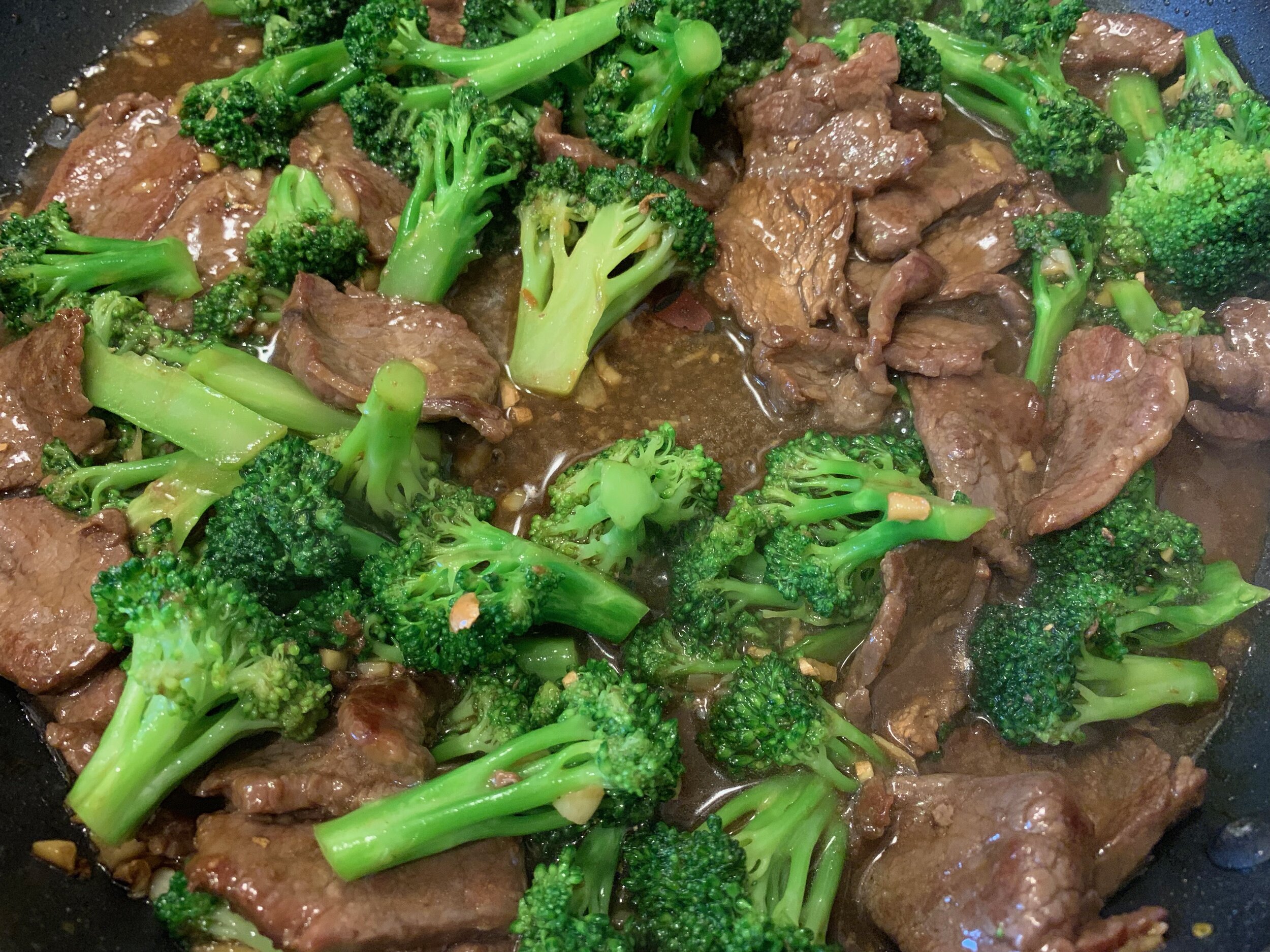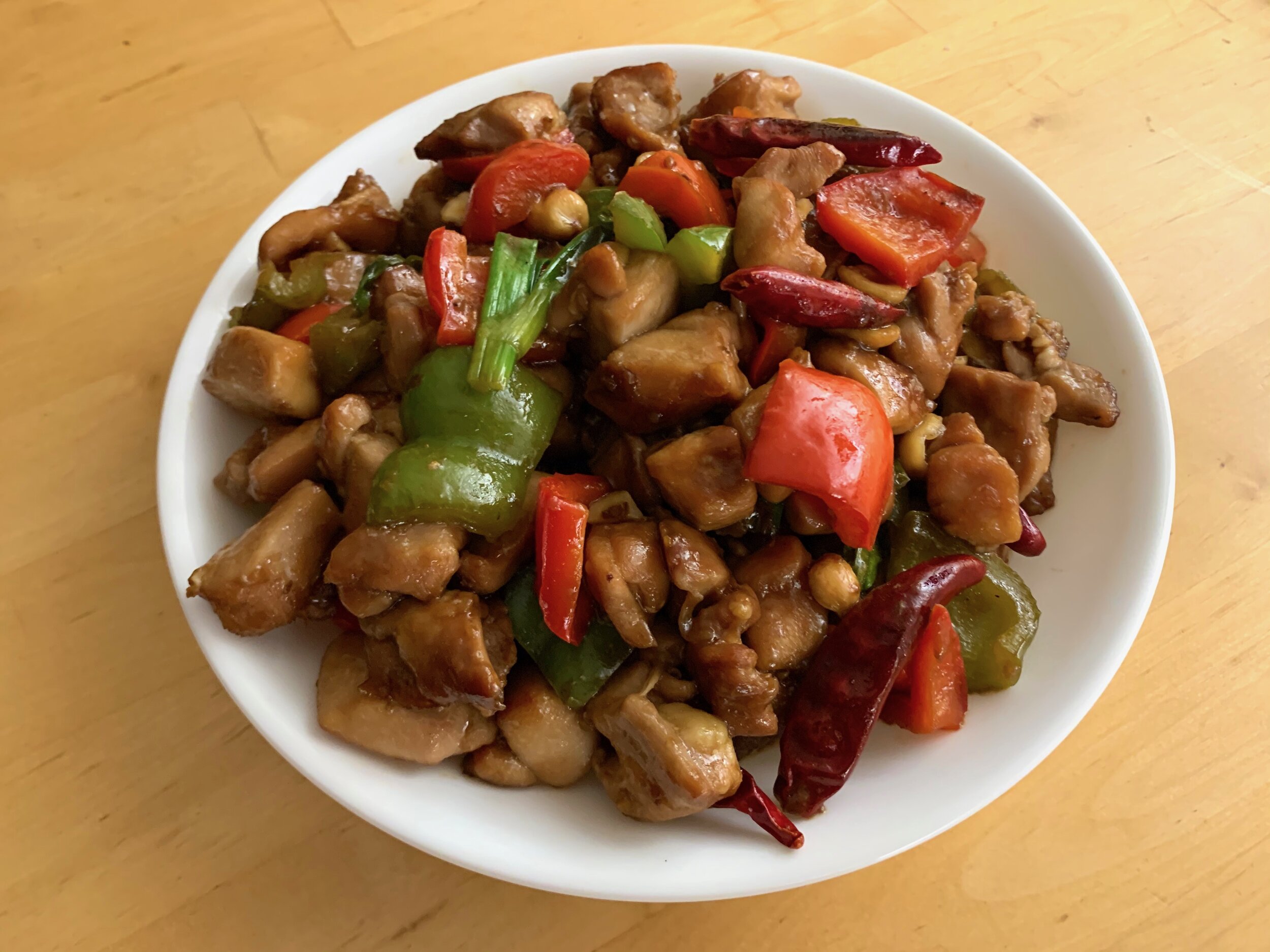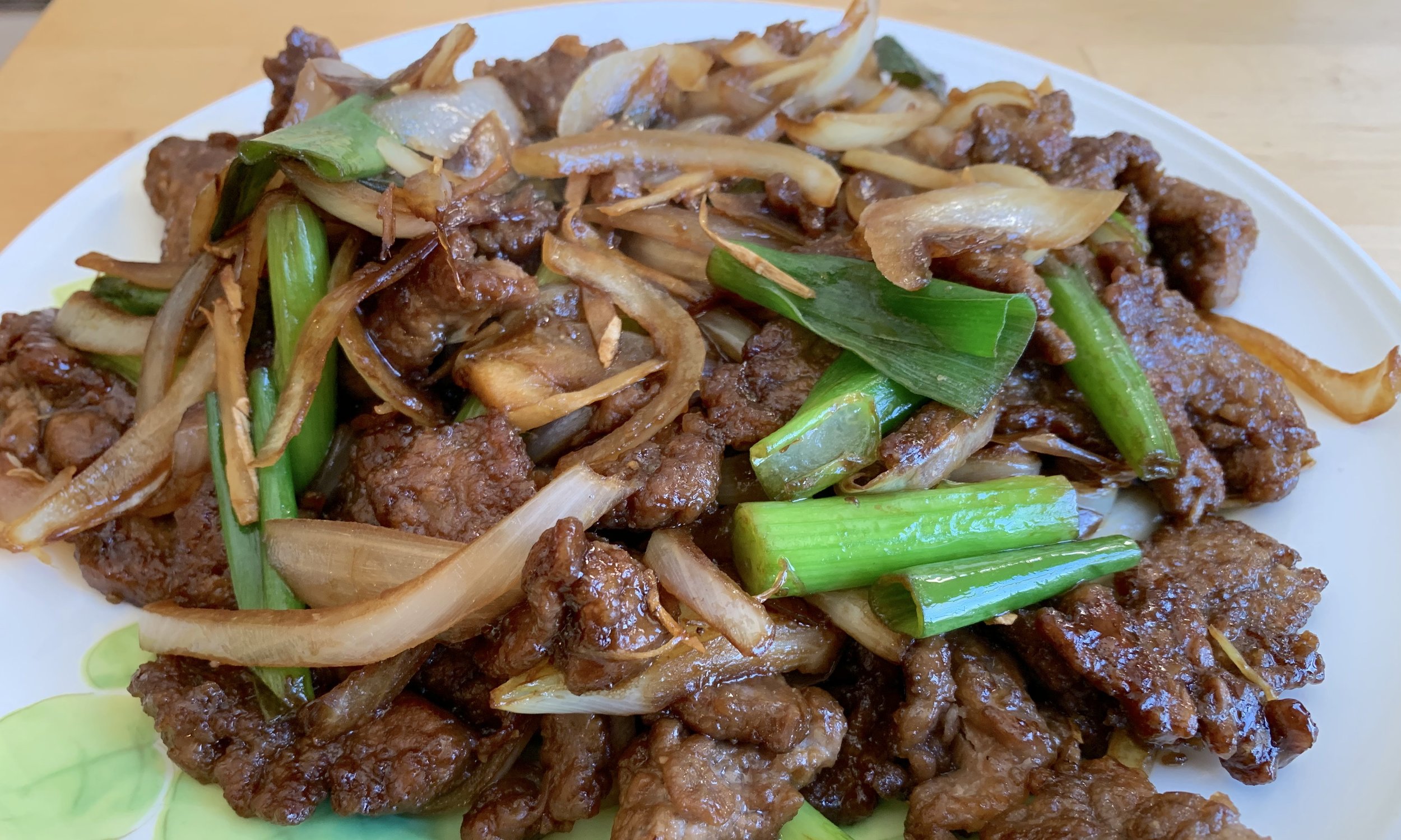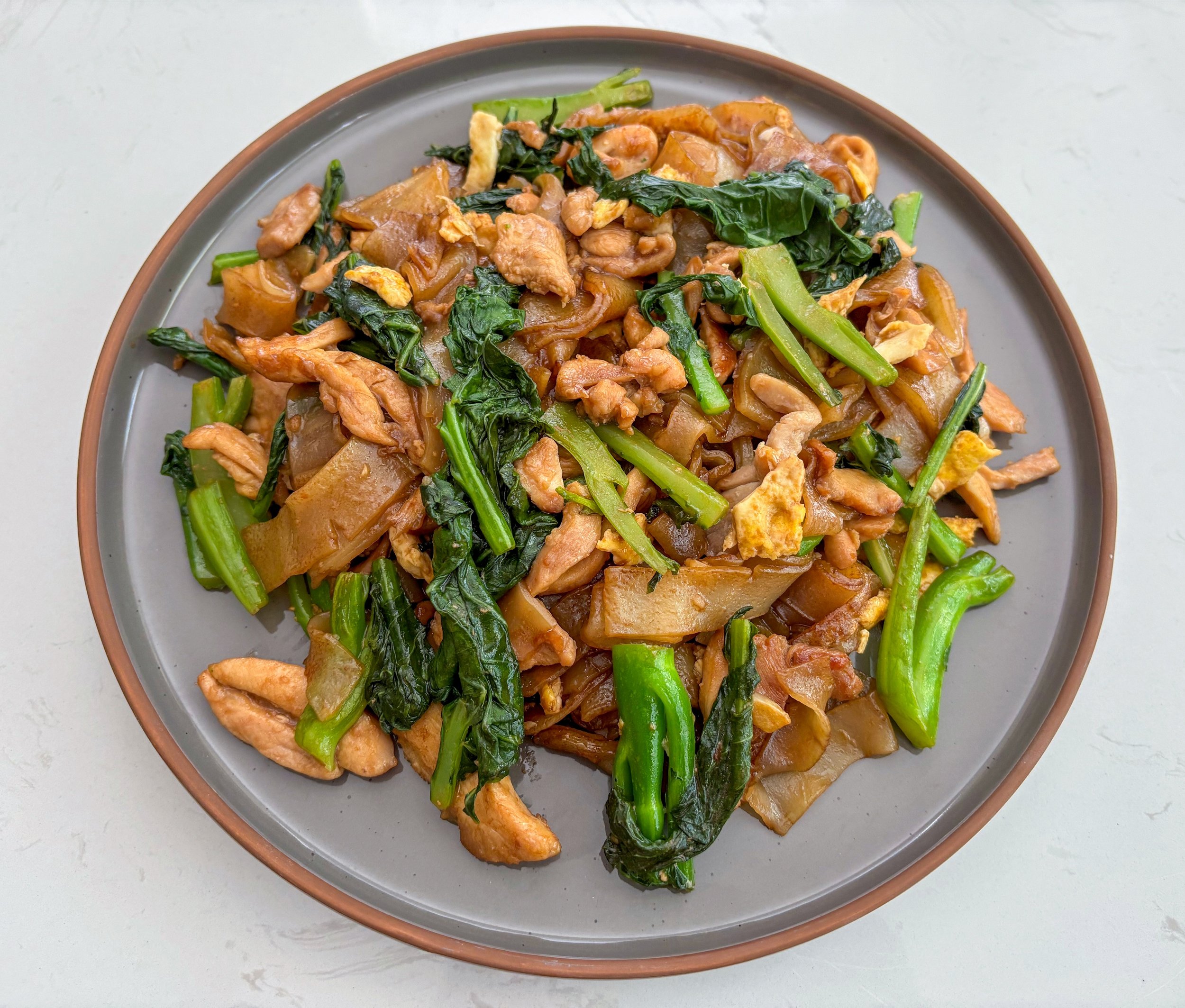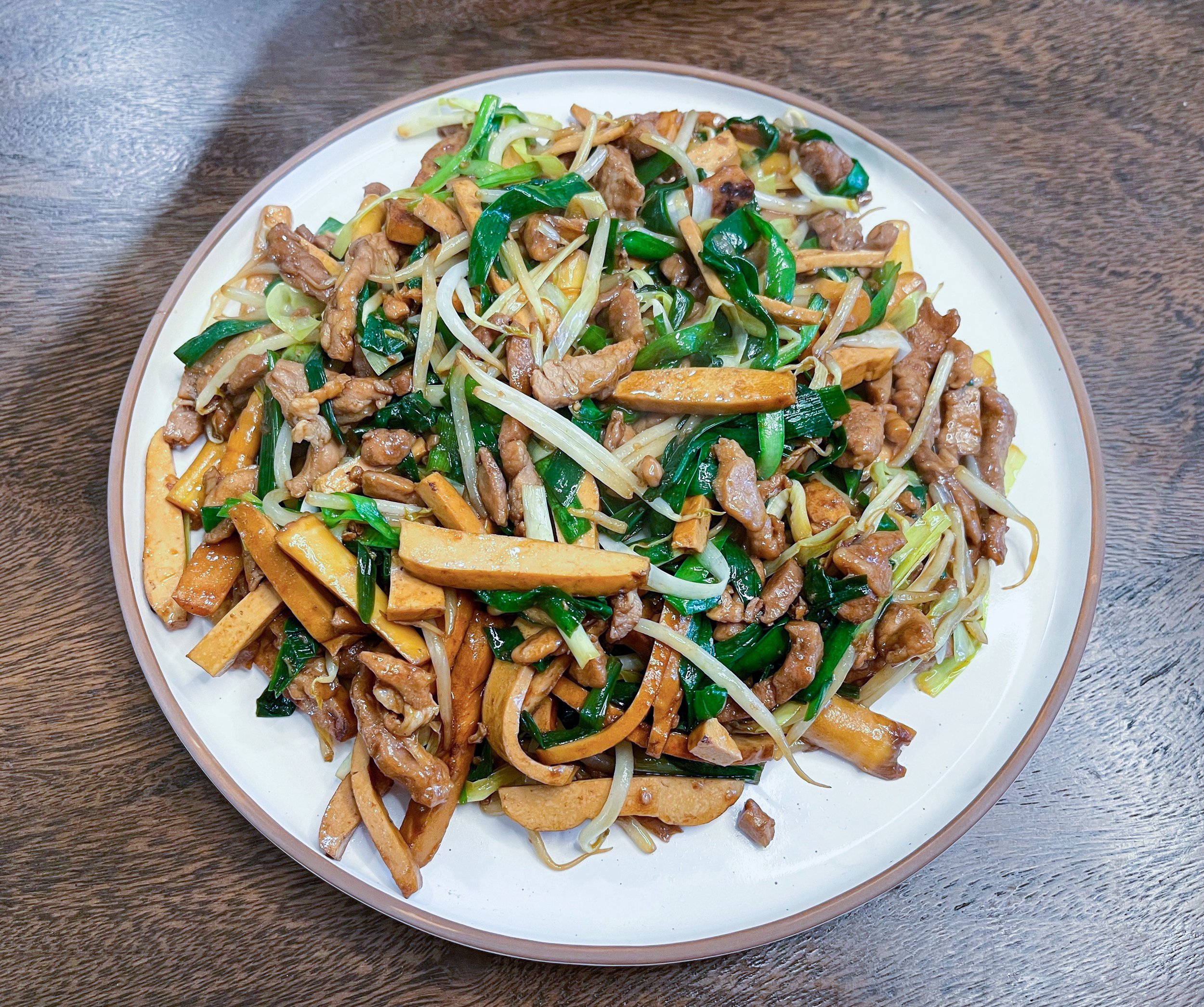Beef and Broccoli

Beef and broccoli is a staple of Chinese takeout restaurants in America, yet is unknown in China. This dish is American-born, created by Chinese immigrants who arrived in large numbers via San Francisco in the mid-1800s, during the California Gold Rush and the subsequent construction of the Transcontinental Railroad [1]. Making use of humble local ingredients, including plentiful American beef and new vegetables like broccoli (itself brought to American shores by Italian immigrants), the growing Chinese-American community created a new cuisine with unique dishes.
As the gold dried up and jobs in California became scarce, however, racial prejudice, coupled with a fear that Chinese immigrants would undercut white wages, exploded into violence. Anti-Chinese sentiment culminated in the Chinese Exclusion Act of 1882, the only law in American history which prevented members of a specific ethnic group from immigrating to the United States. The law remained in effect until World War II, effectively separating the extant American Chinese community from their homeland [2]. Further legislation banned Chinese from working in many industries. Chinese workers were, however, allowed to work in food service. It was this exception that led many Chinese-Americans to turn to the restaurant business. Restaurants became an economic lifeline for Chinese communities across the country, adapting their dishes to cater to American tastes [3]. Through the early 1900s, Chinese restaurants spread throughout the country, building a reputation for cheap, fast, and satisfying food. It has been argued by some historians that the spread of the casual Chinese takeout restaurant likely led the way towards a wider acceptance of Chinese-Americans in American society [4].
In more recent years, Chinese-American takeout food has been derided as “not authentic” by a new wave of purportedly open-minded diners looking to explore other cultures through food. It’s certainly true that when you order from an American Chinese takeout restaurant, you are, for the most part, not getting dishes that you would eat in China or Taiwan. What you are experiencing, however, is in many ways a reflection of Chinese-American heritage, a story of immigrants making do and scratching out a living in a foreign environment to provide a better future for their descendants. In the process, they created, in the form of the local Chinese takeout spot, an American institution. In my opinion, such an institution is worth savoring.
Ingredients
For the Beef
1 lb flank steak, thinly sliced
1 tsp soy sauce
1 tbsp cornstarch
1 tbsp vegetable oil
For the Stir-Fry
1 lb broccoli, cut into florets
1 inch ginger, minced
2 cloves garlic, minced
For the Sauce
¼ cup oyster sauce
½ cup beef broth
1 tbsp cornstarch
1 tbsp sesame oil
Begin by slicing the beef. Flank steak is a cut commonly used for stir-frying, as it is lean and flavorful, as well as being relatively cheap. However, the long muscle fibers make it a relatively tough piece of meat. Fortunately for us, the fibers run parallel through the entire cut, so we can solve the toughness problem by slicing thinly against the grain, giving us short muscle fibers in each piece of meat. Identify the direction in which the muscle fibers are going, and slice perpendicular to this direction. Both the thickness and direction of the slices are critical—meat cut too thick or at the wrong angle will result in a chewy and unpleasant texture. We want pieces which are about 2 inches long and 1/8-1/4 inch thick. If you find it difficult to cut this thinly, it can be helpful to put the meat in the freezer for an hour or so—not long enough to actually freeze, but enough for the meat to firm up.
Put the sliced beef in a large bowl, and prepare a quick marinade by adding 1 teaspoon of soy sauce, 1 tablespoon of oil, and about a tablespoon of cornstarch. Mix well, and set the beef aside to marinate for 20-30 minutes at room temperature. While the meat is marinating, we can use the time to prepare the other ingredients. Mince the garlic and ginger, and cut the broccoli into bite-size florets.
When the meat is ready to cook, heat a tablespoon of oil in a skillet over high heat. Fry the beef in the skillet for 30 seconds to a minute per side, being sure not to crowd the skillet. It is important to work quickly when searing the meat, to avoid overcooking it. Work in batches if necessary, removing the cooked beef to a holding plate.
Reduce the heat to medium and add the minced ginger and garlic to the empty skillet and fry for about 30 seconds, until fragrant. Then add the broccoli florets to the skillet and cook, covered, for 4-5 minutes, or until the broccoli is tender. If your broccoli is particularly tough, add about ¼ cup of water to the skillet to create some steam and help it along.
While the broccoli cooks, create the sauce mixture by combining the oyster sauce, beef broth, and 1 tablespoon cornstarch. When the broccoli is tender, return the beef to the pan and pour over the sauce mixture. Cook for 1-2 minutes, tossing the ingredients together, until the sauce thickens. Remove from the heat, stir in 1 tablespoon toasted sesame oil, and serve.
Substitutions
Broccolini, broccoli rabe, or gai lan (Chinese broccoli) can be used in this dish instead of regular broccoli. Other cuts of beef, such as sirloin and tenderloin, work well in this dish. However, steer clear of cuts with connective tissue, and be sure to slice against the grain.
[1] Over 15,000 Chinese workers labored on the Transcontinental Railroad, forming the majority of the workforce employed by Leland Stanford’s Central Pacific to blast, tunnel, and dig their way through the treacherous mountain passes of the Sierra Nevada and Rocky Mountains. No records were kept of the number of laborers who perished in the mountains, but modern historians estimate the death toll to be at least 1 in 20. The workers of the Central Pacific laid the line from Sacramento, California to Promontory, Utah, where they met the Union Pacific’s westbound tracks. Chinese workers were paid $26 per month, half that of white workers on the railroad. Leland Stanford, of course, gained immense wealth through his involvement in the transcontinental project, and went on to found Stanford University. Recently, researchers at Stanford have begun the “Chinese Railroad Workers of North America Project,” with the aim of documenting the untold history of these migrant laborers. The project website can be found here.
[2] For many Chinese-American families, this separation from the mother country was in many ways permanent. In the six decades of exclusion, China changed beyond all recognition, with the dethronement of the last emperor, two civil wars, the Japanese invasion, and the rise of communism. As with many immigrant groups, they found themselves isolated in a hostile country with no home to return to.
[3] For an extensive exploration of the Chinese-American immigrant experience through the lens of Chinese food in America, I highly recommend the “Fortune Cookie Chronicles” by Jennifer Lee.
[4] America has had a somewhat alarming track record of mainstreaming a culture’s food decades before accepting a culture’s people. German (hamburgers and hot dogs, anyone?), Italian, Japanese, Chinese, Mexican…
Recipe
Prep Time: 10 min Cook Time: 8 min Total Time: 38 min
(+20 min inactive)
Difficulty: 2/5
Heat Sources: 1 burner
Equipment: skillet or wok
Servings: 4
Ingredients
For the Beef
1 lb flank steak, thinly sliced
1 tsp soy sauce
1 tbsp cornstarch
1 tbsp vegetable oil
For the Stir-Fry
1 lb broccoli, cut into florets
1 inch ginger, minced
2 cloves garlic, minced
For the Sauce
¼ cup oyster sauce
½ cup beef broth
1 tbsp cornstarch
1 tbsp sesame oil
Instructions
1. Slice the flank steak against the grain into thin slices, about 1/8-1/4 inch thick.
2. Mix the beef with 1 tsp soy sauce, 1 tbsp vegetable oil, and 1 tbsp cornstarch. Set aside to marinate at room temperature for 20-30 minutes.
3. Heat about a tablespoon of oil in a skillet over high heat. Fry the beef in a single layer in the pan for 30 seconds to 1 minute per side. Work in batches if necessary, removing the cooked beef to a holding plate.
4. Add the minced ginger and garlic to the empty skillet, reduce the heat to medium, and fry for about 30 seconds or until fragrant.
5. Add the broccoli florets to the skillet and cook, covered, for 4-5 minutes, or until the broccoli is tender.
6. Meanwhile, mix together the oyster sauce, beef broth, and 1 tbsp cornstarch to form the sauce.
7. Return the beef to the skillet, pour in the sauce mixture, and cook for 1-2 minutes, or until the sauce thickens.
8. Remove from the heat, and finish the dish by mixing in 1 tbsp sesame oil.










